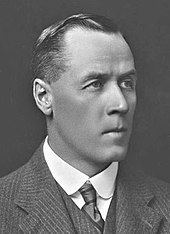Name John Latham Succeeded by Owen Dixon | ||
 | ||
Previous office Member of the Australian Parliament (1922–1934) Similar People Owen Dixon, Edward McTiernan, Wilfred Fullagar, Frank Kitto, Joseph Lyons | ||
Sir John Greig Latham GCMG KC (26 August 1877 – 25 July 1964) was an Australian judge and politician who served as fifth Chief Justice of the High Court of Australia for seventeen years, from 1935 to 1952.
Contents
Early life and education
Latham was born in Ascot Vale, a suburb of Melbourne, Australia. His father was a prominent citizen, whose achievements as secretary for the Society for the Protection of Animals were deeply respected. John Latham won a scholarship and became a successful student at Scotch College and the University of Melbourne, studying logic, philosophy and law. At one point, he was the recipient of the Supreme Court Judges' Prize. In November 1902, Latham became the first secretary of the Boobook Society (named for the southern boobook owl), a group of Melbourne academics and professionals which still meets.
Naval career
During World War I, he was an intelligence officer in the Royal Australian Navy, holding the rank of lieutenant commander. He was the head of Naval Intelligence from 1917, and was part of the Australian delegation to the Imperial Conference and then the Versailles Peace Conference, for which he was appointed Companion of the Order of St Michael and St George (CMG) in the 1920 New Year Honours. He grew to dislike Prime Minister Billy Hughes.
Legal career
Latham had a distinguished legal career. He was admitted to the Victorian Bar in 1904, and was made a King's Counsel in 1922. In 1920, Latham appeared before the High Court representing the State of Victoria in the famous Engineers' case, alongside such people as Dr H.V. Evatt and Robert Menzies.
Political career
In 1922, Latham was elected to the Australian House of Representatives for Kooyong in eastern Melbourne. Although his philosophy was close to Hughes' Nationalist Party, Latham's experience of Hughes in Europe ensured that he would not serve under him in a Parliament. Instead, he initially aligned himself with the Liberal Union, a group of conservatives opposed to Hughes; his campaign slogan was 'Get Rid of Hughes'. On Hughes' removal in 1923, he subsequently joined the Nationalist Party (though he officially remained a Liberal until 1925). From 1925 to 1929, he served as the Commonwealth Attorney-General in the Bruce–Page government. He wrote several books, including Australia and the British Empire in which he argued for Australia's place in the British Empire.
After Bruce lost his Parliamentary seat in 1929, Latham was elected as leader of the Nationalist Party, and hence Leader of the Opposition. He opposed the ratification of the Statute of Westminster (1931) and worked very hard to prevent it. Two years later, Joseph Lyons led defectors from the Labor Party across the floor and merged them with the Nationalists to form the United Australia Party. Although the new party was dominated by former Nationalists, Latham agreed to become Deputy Leader of the Opposition under Lyons. It was believed having a former Labor man at the helm would present an image of national unity in the face of the economic crisis. Additionally, the affable Lyons was seen as much more electorally appealing than the aloof Latham, especially given that the UAP's primary goal was to win over natural Labor constituencies to what was still, at bottom, an upper- and middle-class conservative party.
The UAP won a huge victory in the 1931 election, and Latham was appointed Attorney-General once again. He also served as Minister for External Affairs and (unofficially) the Deputy Prime Minister. Latham held these positions until 1934, when he retired from the Commonwealth Parliament. He was succeeded by Menzies, who would go on to become Australia's longest-serving Prime Minister.
Judicial career
Latham was appointed Chief Justice of the High Court of Australia on 11 October 1935. From 1940 to 1941, he took leave from the Court and travelled to Tokyo to serve as Australia's first Minister to Japan. He retired from the High Court in April 1952.
Latham was one of only eight justices of the High Court to have served in the Parliament of Australia prior to his appointment to the Court; the others were Edmund Barton, Richard O'Connor, Isaac Isaacs, H. B. Higgins, Edward McTiernan, Garfield Barwick, and Lionel Murphy.
Death
He died in 1964 in the Melbourne suburb of Richmond. Latham was a prominent rationalist and atheist, after abandoning his parent's Methodism at university. He was also a prominent campaigner for Australian literature, being part of the editorial board of The Trident, a small liberal journal, which was edited by Walter Murdoch. The board also included poet Bernard O'Dowd. Latham had three children, two of whom predeceased him. His wife, Ella, also predeceased him.
Legacy
The Canberra suburb of Latham was named after him in 1971. There is also a lecture theatre named after him at The University of Melbourne.
